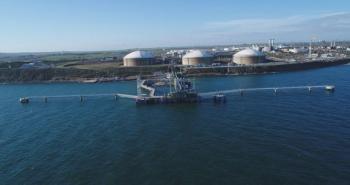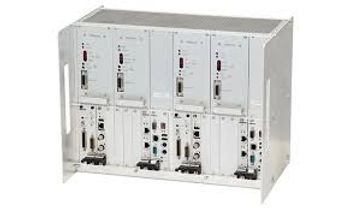
Hydrate formation could damage your centrifugal gas compressors
A case study on hydrate formation in centrifugal compressors was presented at the recent Turbomachinery Symposium in Houston, Texas, by Orlando Donda Filho, Senior Engineer, Petrobras, Eder Ramalho, Fleet Manager, Caterpillar Solar Turbines, Macaé and Pedro Antonio Lima Donda, Senior Maintenance Technician, Petrobras. Below are the excerpts:
Hydrates are composed of water and light hydrocarbons in a solid matrix that resembles ice. They are formed at low temperatures such as downstream of throttling a high pressure, saturated gas across a control valve. They are found upstream oil & gas primary separation facilities where water saturated gas may be processed, suction permanent and temporary filters, anti-surge loop piping, upstream and downstream of compressor control valves, depending upon pressure and temperature. Hydrates are found in balance line in back-to-back compressor designs.
Hydrate formation is not easily detectable in compressor systems because instrumentation and protective controls are not normally provided for this purpose. Hydrate leaves no trace, when systems are examined for the potential cause, the temperature and pressure are normally at ambient conditions and the hydrates have evaporated.
Control strategies should be developed and devices should be provided to detect and avoid damaging hydrate formation in compressor systems. There have been a number of compressor repairs required where the root cause of failure has not been clearly identified.
Hydrate composition is basically water and methane. Other compounds may occur in quantities no greater than 2 %.
Hydrate formation in the suction side of a compressor may result in the following:
- Reduction in suction temperature
- Reduction in discharge pressure
- Reduction in compressor flow
- Low energy surge (the most dangerous event)
- Increase in discharge temperature.
In the case study, it was found that the protection system didn’t work correctly. Below are the reasons:
- Failure of high discharge temperature switch
- Pneumatic Anti-Surge Detector didn’t work in presence of low energy surge
- Anti-Surge Control System did not include any fallback strategies for instrument failure
- Vibration not high enough to activate vibration shutdown
- Surge condition not possible to be recognized by operators
- Low suction temperature control not implemented.
Hydrate formation can be prevented by:
- Operating within the design range
- Providing active suction temperature control with existing coolers
- Providing low suction temperature alarm when operation approaches the border of hydrate envelope
-Using process transmitters instead of switches to improve process control reliability and reduce failure potential.
The authors recommend that the control function should be configured to shut down the compressor if the compressor speed is greater than or equal to 90% of rated speed, flow is less than 20% and if conditions persist for over 10 seconds.
Newsletter
Power your knowledge with the latest in turbine technology, engineering advances, and energy solutions—subscribe to Turbomachinery International today.




